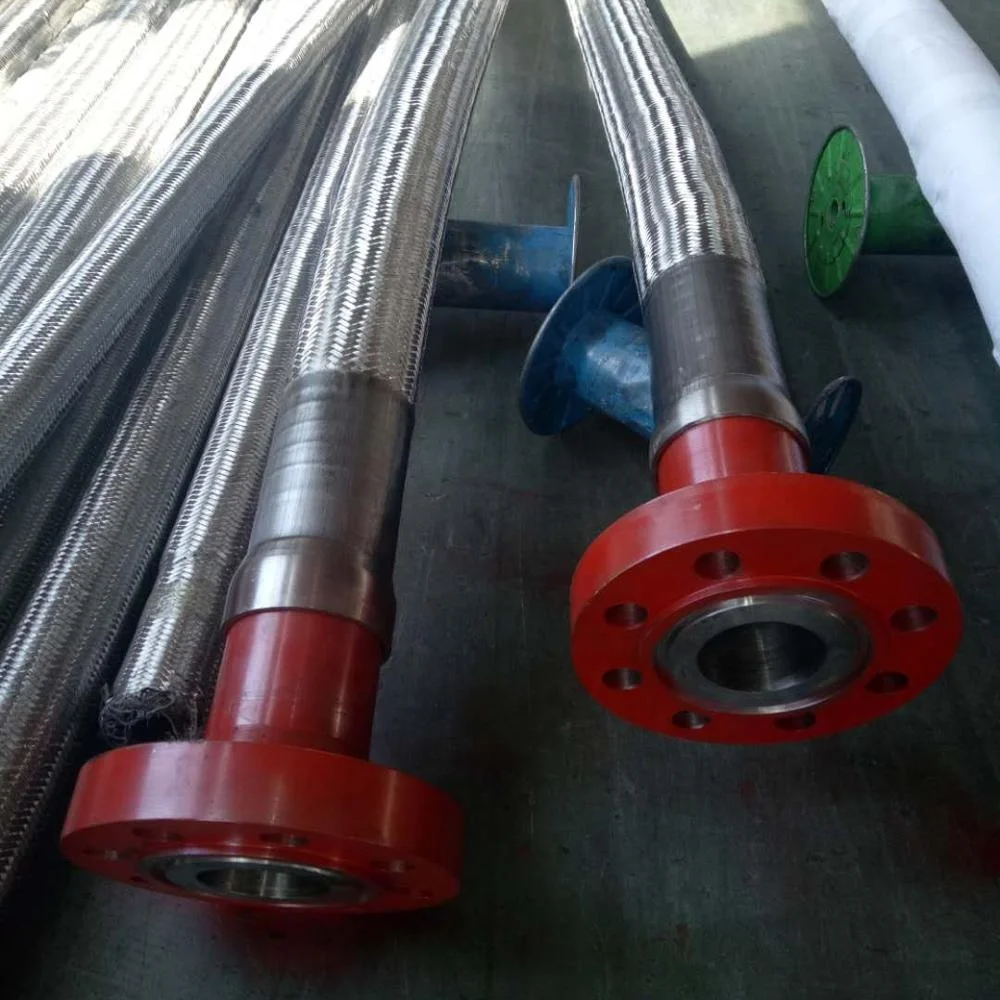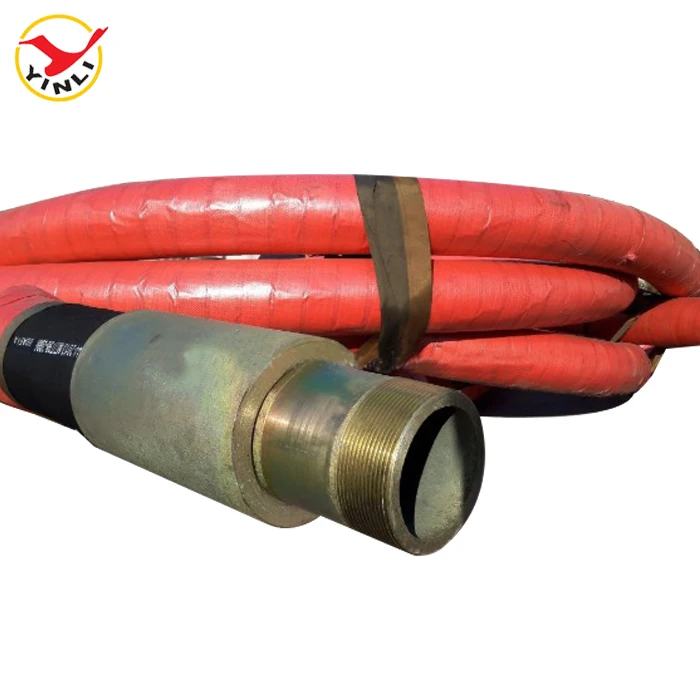kelly hose failure free sample

13 Causes Of Hose Failure 1) Mis-application -Perhaps the greatest cause of failure is using a hose, fitting, or clamp in an application that it is not designed for.
2) Kinking at or near the fittings -Once the barb of the fitting cuts into the tube of the hose, the product being conveyed can escape into the reinforcement and eventually lead to bubbling or blistering of the cover within several feet of the end.
3) Temperature Exposure- As temperature increases pressure ratings decrease. Excessive hot or cold temperatures will lead to discoloration, cracking, or hardness - as well the build up of static electricity if hose wire has not been ground properly.
5) External damage to hose carcass -Kinks, crushed sections, and cover damage which exposes reinforcement will eventually break down the reinforcement and lead to a hose failure.
6) Exceeding the minimum bend radius -Kinking, crushing, or forcing a hose to bend beyond its minimum bend radius (measured from the inside edge of the hose, not the centerline). This is commonly seen on high pressure hoses or vacuum hoses.
7) Defective hose or improperly installed or selected clamp -Failure from a defective hose will typically occur in the first few hours of service, such as pin holes, blow-outs, or tube and cover separation. Improperly installed or selected clamps can result in the coupling ejecting from the end of the hose. Always confirm the manufacturer recommendations based on STAMPED information.
8) Tube or cover not compatible with fluids or environment -Usually results in discoloration, swelling, sponginess, or the breakdown of the hose carcass. For material handling hoses, always rotate to ensure even wear of the hose tube.
9) Old age -Hose is not ‘pipe’, it is a flexible component that will degrade over time. Shelf or service life will range from 1 to 20+ years, depending on its composition, application, and environment. Older hoses become discoloured, stiff, or burst at low pressures.
10) Incorrect hose length -Too short of a length does not allow the hose to expand/contract due to changes in pressure or temperature and causes excessive stress on the fittings or hose reinforcement.
11) Twisting hose during installation or service -Twisting a hose rather than naturally bending the hose will reduce life. It is estimated a 7% twist when installing a hose in a permanent application can reduce hose life by 90%.
12) Poor workmanship -Hose and fittings are made of a unique blend of different materials with complex manufacturing methods - human error, inconsistent machinery, or poor product quality or raw materials can result in defects or variances greater than allowable tolerances. As for failure at the end fitting, ends blowing off assemblies can be a result of sub-standard coupling procedures or due to the “mixing-and-matching” of incompatible hose, couplings, or clamps.
13) Contaminated media being transferred -Foreign particles or residue in the fluid or air can flow through the tube and break it down or wear it out prematurely. Always clean hoses prior to installing in field to ensure there is no cross-contamination.

Flexible drilling rubber hoses play an important role in petroleum extraction. They should suffer high operating pressure, extreme operating temperature, abrasion and other inferior elements. Our special compounded synthetic rubber has been proven an effective and economical way to reject these problems. All our oilfield drill hoses are manufactured as API 7K or other related specifications.
Steel cable reinforcement loads most working pressure up to 15,000psi. The wires are usually zinc-plating or copper platting to improve steel wire resistant against rust and corrosion. Due to the thick reinforcement, the hoses should be handled or stored in correct way to avoid kicking or crushing. They will substantially decrease their rated operating pressure.
Rotary hose, Kelly hose, cement hose, mud hose, jumper hose and vibrator hose and choke & kill hoses are the most popular oilfield rubber hoses. They convey high-pressure drilling fluid from one place to another. Many end fittings are provided to satisfy different applications. Most end fittings are made according to API standards. Special order is also available.

Unfortunately, accidents that result from failure to pay attention to safety protocols and procedures happen all too often. A good motto to keep in mind is that no job is so important or service so urgent that rig operations cannot be done with a “safety first” mindset.
In an effort to help those in the industry adopt a safety first mindset, Grainger, a supplier of MRO products to the oil and gas industry, offers the following guidelines:
![]()
Steel wire braided hydraulic hose(one or two steel wire braided )SAE 100R1AT/DIN EN853 1SNSAE 100R2AT/DIN EN853 2SNDIN-EN857 1SCDIN-EN857 2SCSAE 100R1A/DIN EN853 1STSAE 100R1A/DIN EN853 2ST
SAE 100R5SAE 100R16SAE 100R17Pressure washer hoseMulti spiral hydraulic hose (four or six high tensile steel wire spiralDIN EN856 4SPSAE 100R9SAE 100R12DIN EN856 4SHSAE 100R13SAE 100R15Textile Braid Hydraulic HoseSAE 100R3SAE 100R6

As you prepare to begin dry ice blasting, ensuring you have the proper air hoses and fittings will lead to a better blasting experience. A bad hose or improper fitting can lead to poor performance or even injury. Below are several tips to make certain your dry ice blasting experience is safe and efficient.
Before dry ice blasting, inspect both the hose and fittings for excessive wear and be sure your hose doesn’t have cuts or tears. A hose that comes loose during blasting can quickly become a safety hazard. During inspection, also note the PSI rating of the hose and make sure it exceeds the PSI of the compressor. If the PSI of the compressor exceeds the PSI rating of the hose, the hose could burst.
The inside diameter of the hose should match the diameter of the source connection. Hooking a 1.5” hose into a .5” source line will be counterproductive, causing a pressure drop. If you must use multiple hoses with different inside diameters for the project, start with the hose with the largest inside diameter closest to the source and use the hose with the smallest inside diameter closest to the end-use blasting machine or nozzle.




 8613371530291
8613371530291